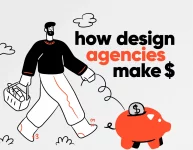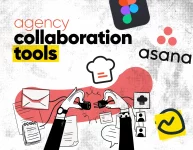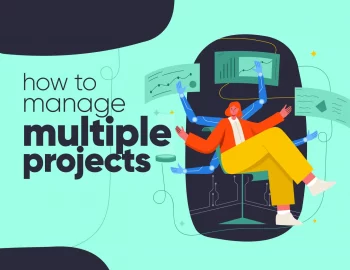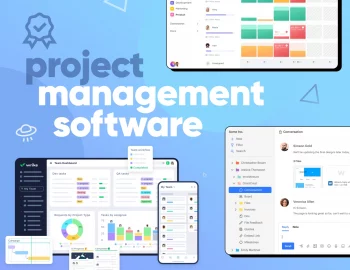Let’s start with the harsh truth – creative feedback can mess with your head. One moment you’re riding high on a killer design you just wrapped up, and the next, you’re staring at a comment like “Can we make it more fun, but also serious?” and wondering if you’ve entered some kind of creative Twilight Zone. How can you not get angry when dealing with such client feedback, right?
It’s frustrating, sure. But it doesn’t have to send you spiraling. In fact, with the right mindset (and a few solid strategies), you can learn how to deal with the angry vibes and avoid ruining your day from client feedback – and even turn it into something genuinely helpful. Ready? Let’s dive in.
1. The emotional rollercoaster of client feedback
You pour your heart into a design. You hit send. Then you wait. Then it lands – that client email with “quick thoughts” that feels more like a sucker punch.
Whether it’s unclear or just plain contradictory, client feedback can throw you way off balance. One confusing comment can spin into self-doubt, frustration, or a full-on mental spiral that derails your focus for hours. And let’s be honest – when you actually care about the work (like most of us do), it’s almost impossible not to take it personally sometimes.
But here’s the thing: You’re not overreacting. You’re a human doing creative work, and that’s a vulnerable place to be. The goal here isn’t to “toughen up” – it’s to build the tools to handle those hits without letting them knock you over.
2. Why client feedback feels so personal
The truth is, when you’re proud of something, any critique – no matter how mild – can feel like someone’s poking at you, not just the work. This is especially true with creative services where your ideas, instincts, and imagination are front and center.
And let’s not forget: clients aren’t always trained to give helpful, strategic feedback. Sometimes they react based on gut feelings, untold expectations, personal tastes, or internal politics you’ll never see. That disconnect between their world and yours? It’s where a lot of the frustration brews.
Here’s what helps, though – remembering that feedback is about the project, not your worth as a professional. It’s not a personal evaluation or a rejection of your talent. It’s just a messy step in the collaborative process – one that, with the right mindset, you can guide and shape.
3. Mindset shift #1: You are not your work
This one’s big – and hard to live by when you truly love what you do. But here it is: you are not your work.
You might be deeply proud of it, you might have stayed up tweaking kerning for way too long, and you might have fought for that layout like it was your child, but at the end of the day, feedback is about the output, not you.
When client feedback stings, remind yourself – this is part of the deal, not a personal judgment. Just because someone doesn’t love a draft doesn’t mean you’re not talented, skilled, or thoughtful. It means the conversation’s still in progress.
“This is a collaboration, not a courtroom.”
You’re not on trial – you’re co-creating something with your client, and dealing with their feedback is just one step in the back-and-forth that gets you there.
4. Mindset shift #2: Feedback is (usually) a sign they care
Okay, yes – sometimes client feedback is vague, clumsy, or plain unhelpful. But let’s flip it for a sec: the fact that they have feedback usually means they’re invested. They care. They want it to be good. Even if they can’t articulate it clearly, they’re trying to close the gap between what they’re seeing and what they need – and that’s a conversation worth having.
Plus, most clients don’t speak “design.” They speak emotion, business goals, brand identity chaos, and approval chains. So when someone says, “It doesn’t feel right,” what they might mean is, “It’s not aligning with the tone we’re after” or “It won’t land with our audience.” Your job isn’t just to decode it – it’s to lead them there gently.
“They’re showing up. That’s something. Now let’s shape the conversation.”
5. The inner pause: What to do before you react
You just got the email. You feel the heat rising in your cheeks. Your brain is firing off comebacks like it’s prepping for a design duel.
Pause. Breathe. Don’t hit reply.
The moment after receiving frustrating feedback is crucial. It’s the difference between responding like a professional and reacting emotionally (and potentially spiraling into hours of internal rage). Instead of jumping straight into defense mode, here’s what you can do first:
- Step away for 10-15 minutes – physically. Walk, stretch, refill your coffee. Break the emotional loop.
- Rant – safely. Slack a trusted teammate, scribble it out in a journal, or voice note your designer bestie. Get the feelings out somewhere other than the client inbox.
- Write a draft, don’t send it yet. Write down your immediate thoughts and frustrations, then come back to revise with a cooler head and more common sense.
- Zoom out. Ask yourself: “What’s the client actually trying to say here?” Sometimes it’s just bad phrasing wrapped around a legit concern.
Think of client feedback like a raw file: it might look chaotic at first, but it needs a bit of processing before you start editing. That pause? It’s your creative buffer zone.
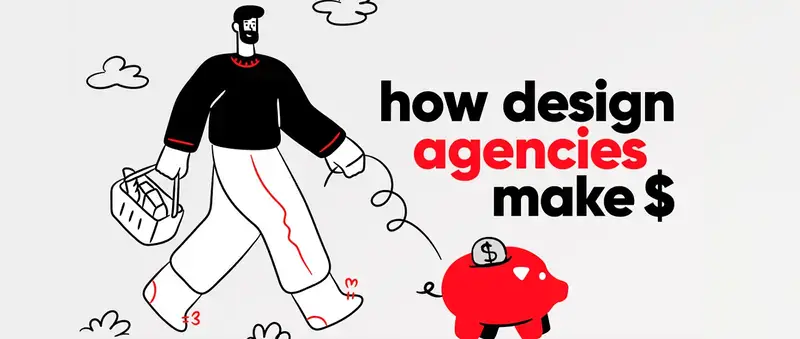
6. Responding with clarity (not saltiness)
So you’ve cooled off a bit, you’ve vented. Maybe you even laughed about the “Can it pop more, but less?” comment. Now it’s time to respond – and this is where your emotional intelligence gets to shine.
Because here’s the deal – you can be direct, clear, and professional, without being passive, aggressive, or passive-aggressive when responding to clients’ feedback. It starts with assuming good intent (even when you’re not totally sure), then leading the conversation toward clarity. Here’s how to respond without spiraling or snapping:
♦ Ask for specifics:
♦ Re-anchor clients in the strategy:
♦ Offer options instead of open questions:
♦ Buy yourself time if needed:
Need a little more backup? Here are some quick lines to keep in your designer toolbox:
- “Appreciate the thoughts! Can you share a bit more about what’s not working for you?”
- “Let’s revisit the goal we’re solving for – I want to make sure we stay aligned.”
- “I hear you – let me play with a few variations and circle back.”
- “Happy to explore that direction! Would you be open to a quick call so I can better understand the vision?”
Also, know when it’s time to tag in support. If a conversation starts going in circles or feels emotionally heavy, looping in your Creative Director or Project Manager isn’t a defeat – it’s smart teamwork.
Bottom line here? The goal isn’t to “win” the feedback conversation. It’s to guide it back toward alignment, with empathy, not ego.
7. Decoding the vague stuff
Sometimes, it’s not what the client says – it’s what they’re trying to say. “Make it pop” isn’t feedback; it’s a vibe. And unless they also have a creative job, you just can’t expect they’d have the language to describe what’s actually off.
Instead of getting stuck in a guessing game, treat vague feedback like a puzzle. Your job isn’t to solve it alone – it’s to ask the right questions so you can solve it together. Here are a few sharper tools for your decoding toolkit:
♦ Turn client words into visuals
♦ Pull the emotion into creative terms
♦ Use references as a bridge
♦ Call out patterns when you hear them
This isn’t about reading their minds – it’s about helping clients find the words for what they’re feeling. And once they do? You’re golden.
8. Understanding where clients are coming from (even when it’s weird)
Here’s a wild thought: most clients aren’t trying to be difficult. They’re not waking up thinking, “How can I confuse my designer today?” In reality, your clients are also dealing with deadlines, internal feedback, brand politics, and their own insecurities about getting it right.
That weird, unhelpful feedback? It often comes from:
- Unclear internal alignment – They’re getting pulled in multiple directions from their boss, their team, or the CEO, who suddenly “has thoughts.”
- Lack of creative vocabulary – They know what they feel, but they don’t always know how to express it, so they reach for words like “fun,” or “clean,” or “not what I expected.”
- Fear of messing it up – Some clients over-correct or micromanage because they’re scared of making a “wrong” decision, and the stakes feel high.
- Pressure to perform – They might be trying to impress someone else or prove they’re leading the project well, which can make them overly critical or controlling.
When you realize that their feedback is shaped by pressure, not personal attacks, it becomes a little easier to detach. You don’t have to absorb all their stress – you just have to navigate it.
Pro tip? If you can show that you understand their concerns and still lead the creative direction with confidence, you become not just their designer, but their calm, trusted partner.
9. Setting boundaries without burning bridges
Boundaries aren’t about being difficult – they’re about staying sane while doing your best work. And when you’re getting vague, late-night, or never-ending feedback loops? You need some fences.
But the key is setting them with confidence and kindness, so clients feel guided, not shut down. Here’s how to do it:
♦ Define the process early
Saying this up front sets the tone and gives you something to refer back to later.
♦ Use friendly firmness
This reinforces the boundary and sets the right expectations without sounding defensive.
♦ Protect your time and focus
Late-night feedback doesn’t mean you owe an instant response.
♦ Don’t be afraid to lead
Bottom line here? Clear boundaries build trust. You’re not just delivering services – you’re managing a creative relationship.
10. Protecting your (and your team’s) creative energy
Here’s the deal – no matter how many deep breaths you take or how polished your client responses are, constant feedback loops can wear you down. And when you’re deeply invested in your work, it’s easy to slip into the trap of caring too much, to the point of emotional exhaustion.
So, here are a few solutions to keep your energy reserves full:
Did the client love the final deck? Did your coworker compliment your type choices? Take the moment. You need those refuels.
Work can’t be your only creative outlet. Make time for zero-pressure side projects, sketching, or moodboarding just for fun – no feedback allowed.
Set mental “office hours” for feedback digestion. If it comes in at 6 p.m.? It waits till morning. You’re not a 24/7 revision robot.
Seriously – nothing resets perspective like hearing “Ugh SAME” from someone else who gets it. You’re not alone in this.
There’s nothing wrong with protecting your creative energy, it isn’t selfish – it’s smart. It’s how you stay sharp, kind, and proud of the work you’re doing, not just for this project, but for the next hundred.
Bottom line
Look, dealing with client feedback will never be your favorite part of the job. And that’s okay. You’re not a mind reader, a magician, or a moodboard therapist – you’re a creative professional doing your best to translate business needs into beautiful, effective design.
Some days, the feedback will flow. Other days, you’ll want to launch your laptop into space. But if you can pause, reframe, and lead the conversation back to clarity – without tying your self-worth to every round of edits – you’ve already won.
Now take a breath, roll your shoulders back, and go turn that mystical, kinda-weird client comment into something amazing.
Ready for your next read? I’ve got some helpful and insightful suggestions for you:


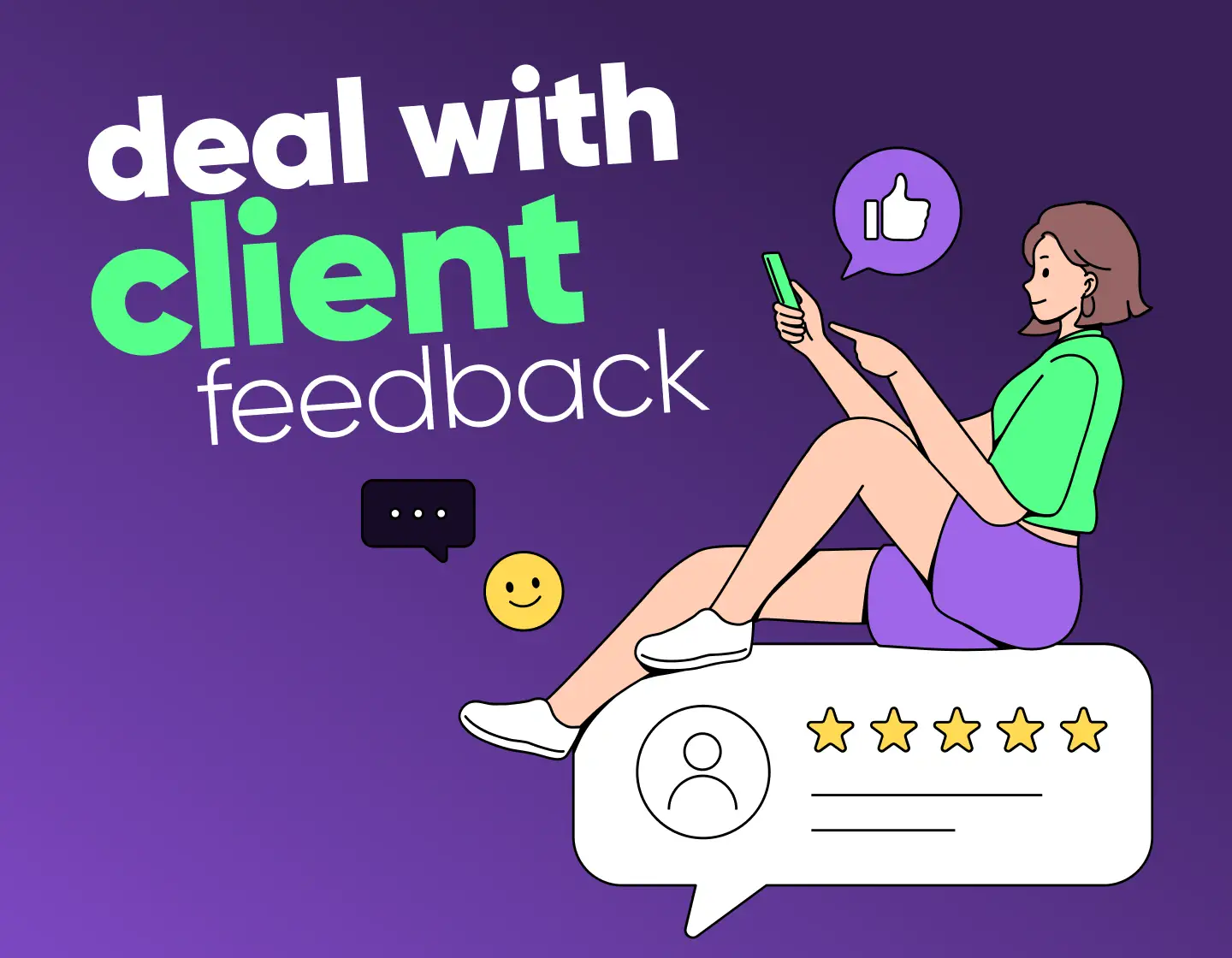
![15 Tips for Effective Communication With Clients [That Actually Work]](https://reallygooddesigns.com/wp-content/uploads/2025/04/tips_for_effective_communication_with_clients-193x150.webp)
